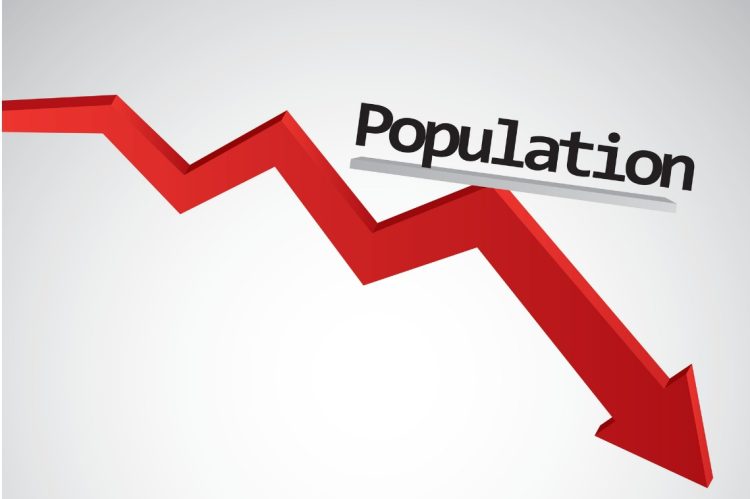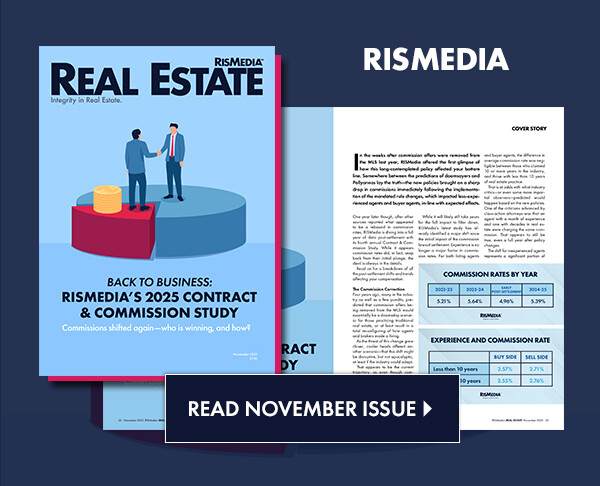A growth market has many advantages for sellers, but what happens when that growth recedes? New research suggests that the United States will be facing a slowing of household growth over the next decades.
On Friday, September 19, 2025, the Harvard Joint Center for Housing Studies (JCHS) held a webinar discussing a new paper, attempting to predict the rate at which the U.S. will add new households (i.e., the set of people occupying a housing unit) over the next decade, extrapolated from population growth data from the U.S. Census Bureau.
The primary speaker on the webinar was the paper’s co-author, Daniel McCue. He and fellow researchers offered three different possible scenarios for how households could grow during this time.
At best, McCue said, there will be growth of homeownership and rental demand that’s close to the historical average. At worst, homeownership and rental demand will see historic lows.
“The pie is getting smaller, and however that pie is being split; on the low end, it will be historically low levels of growth,” McCue said, adding that the low growth scenario is the one that currently looks most likely.
Of the multiple scenarios examined in the paper, one is a “base scenario,” where household growth remains constant by age and ethnicity. (Under the base scenario, changes in homeownership will correlate to changes in the mix of households by age or ethnicity.) There is also an “average scenario,” one where household growth continues along historical averages, and a “low trajectory scenario,” one where household growth falls noticeably due to ongoing challenges preventing people, especially younger people, from becoming homeowners.
The bottom line, though, (as McCue detailed in the webinar) is that there is a “significant slowdown in household growth” ahead for both renter and homeowner households. This is due to population decline, driven in part by a decrease in immigration.
The paper carries on from projections the Center made in January, which projects a household growth rate of 859,000 total households per year from 2025 to 2035, meaning 8.6 million over the 10 years. However, if immigration falls to even lower levels, it could be even lower at 6.9 million new households.
Either way, this would continue a decline in decade-long growth of households; from 1990 to 2000, 13.1 million new households emerged in the U.S. compared to a “sluggish” 10.1 million from 2010 to 2020. (The formula for household growth the researchers used is multiplying population growth by the number of households per person.)
The new paper projects that homeowner households will grow between 337,000 and 685,000 in that timeframe, while renter households will grow between 174,000 and 523,000 per year.
The research also breaks households down into different and intersecting categories based on race, age and household type (i.e., if it’s a married or single household and with or without children). Some household demographic shifts noted on the webinar point to households headed by people aged 80-plus are expected to grow the most by 2035 in one scenario, which could reflect the growing age of the average U.S. homebuyer.
Correlating to this, the age/family demographic projected to grow the most by 2035 is single-person households age 65-plus. Conversely, single-person households below that age are expected to decline slightly. Households headed by people of color are also projected to grow the most over the next decade, particularly Hispanic households.
Builder shifts
A decline in household growth also means a decline in demand for new construction, JCHS researchers previously noted.
“Household growth is the single biggest source of demand for new housing, along with the need to replace older homes, meet the demand for second homes and accommodate a normal level of vacancies in a larger housing market,” the paper stated.
Its projections are that the rate of new construction per year could fall from 1.4 million per year to 1.1 million per year (in an optimistic reading) to 950,000 per year (in a low immigration scenario) by 2035.
Looking forward even further, by 2038, deaths in the U.S. will outnumber births. McCue pointed to declining immigration as the key factor in this. Negative population growth will inevitably be a downward pull on household growth.
McCue was asked about the foreseen impact on housing demand—such as pricing and if the growing number of older households will change “the nature of demand”—during the audience Q&A section of the webinar.
“We’re losing a lot of older adult households, so it’s not that formations are slowing per se, it’s that we’re losing more. We’re going to continue to gain the same number of younger households coming online, but we’re going to lose more and more households over the time,” McCue explained, adding that this will indeed “shape the dynamics of demand for new construction.”
“There will be more need for renovation of housing of older adults that comes onto the market, so that too will eventually solve the lack of for-sale inventories,” McCue continued, “but we’re talking about a decade here, so it’s going to evolve over time.”
Indeed, the report notes, JCHS’ projections in 2019 wound up being outpaced due to the unexpected Covid-19 pandemic, which briefly created a period of homeownership growth due to low interest rates. That period ended “abruptly” in 2022, the paper notes, and then in 2023 and 2024 home prices and the 30-year fixed-rate mortgage increased.
McCue, who noted that current unaffordability is the “leading factor keeping people from becoming homeowners,” added that an unforeseen “economic boom” is the type of event that would be needed to increase homeownership. Such a boom would also “drive up prices still more,” McCue noted, saying that low homeownership and high renting remains the most likely scenario given the current path.
For the full webinar recording, click here.












